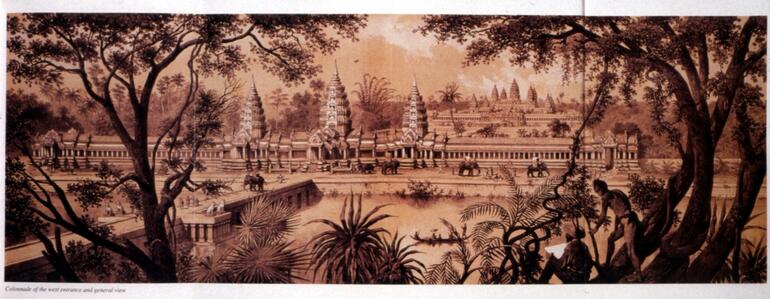
History of Angkor
Angkor Archaeological Park in Siem Reap, Cambodia, was once the seat of the Khmer Empire, which ruled a large portion of Southeast Asia between the ninth and fifteenth centuries A.D. Following the peak of its power in the twelfth century, Angkor began a long decline until only Angkor Wat temple was still in use by the sixteenth century. Over time, the dozens of Hindu and Buddhist temple complexes and hundreds of smaller structures that made up Angkor were swallowed by the jungle.
Angkor was re-documented beginning in the 1850s by French archaeologists, art historians, and architects. In the early 1900s, during French colonial rule over Cambodia, a commission to restore the site for tourism purposes was established. This group also oversaw ongoing archeological projects. Major efforts at the site begin in the 1960s when Cambodia was beginning the transition from colonial rule to a limited form of constitutional monarchy.
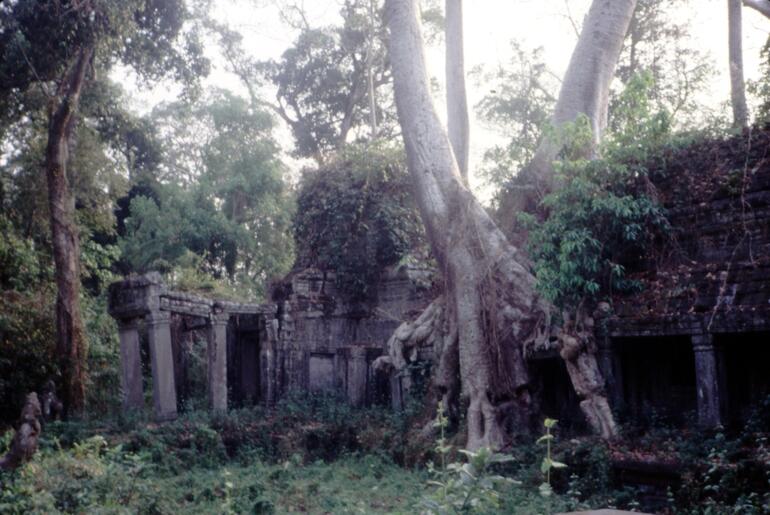
History of Angkor
Civil war broke out in Cambodia in the 1970s, and with the subsequent takeover of the country by the Khmer Rouge, these efforts came to a halt and all work at Angkor ceased. Among the estimated 1.8 million Cambodians who perished during the Khmer Rouge period were those with training and experience at Angkor Archaeological Park and other heritage sites in the country.
A generation of Angkor’s caretakers were devastated. When the strife ended in 1978, less than a dozen Khmer custodians of Angkor had survived.
Cambodia remained socially and economically isolated from the rest of the world for more than a decade. During this period, no work was done at Angkor.
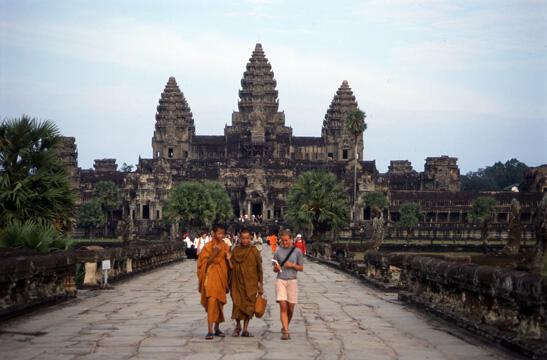
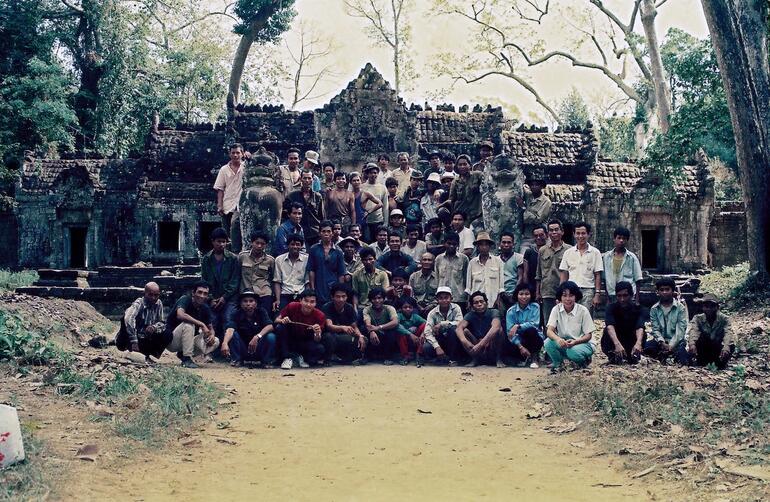
World Monuments Fund at Angkor
In 1989, World Monuments Fund (WMF) sent an initial field mission to Cambodia to survey Angkor and evaluate the damage that the archaeological park had suffered after 20 years of civil strife and international isolation.
Encouraged by the Ministry of Culture, WMF developed recommendations to address fundamental preservation issues at the temple complex of Preah Khan and WMF began field work there in 1991.
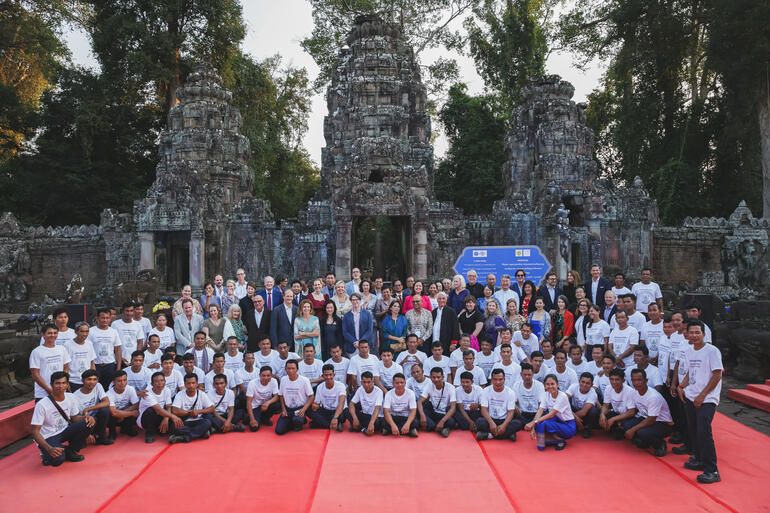
World Monuments Fund at Angkor
Since then, WMF has partnered with the Authority for the Protection and Management of Angkor (APSARA) to build a comprehensive conservation, training, and education program at Angkor.
WMF’s program is designed to advance the preservation of one of the most significant historic monumental complexes in the world.
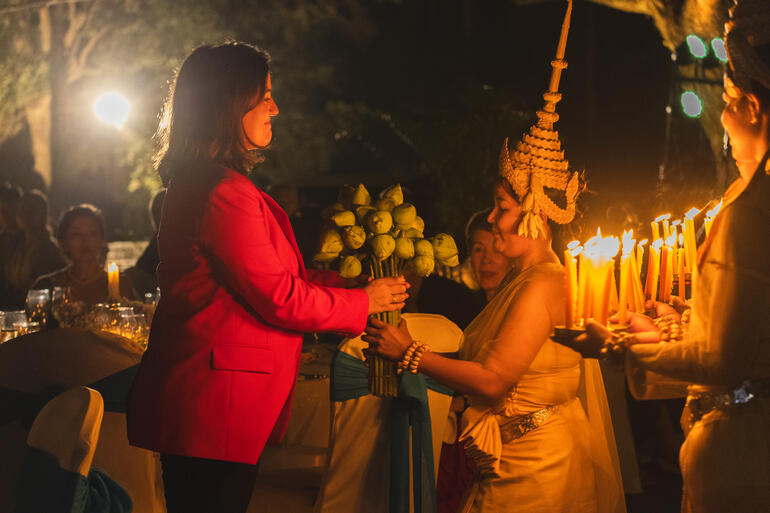
World Monuments Fund at Angkor
Over thirty years later, WMF has trained and currently employs more than 100 full-time conservation technicians and specialists, most of whom live in the park’s villages and mentor younger workers. Today, the Angkor Archaeological Park is the main driver of tourism in Cambodia.
Since our first engagement at Angkor, WMF has worked at four sites within the complex. Long-term stewardship is a key goal of the preservation work at Angkor and WMF strives to ensure that local management has the capacity to care for these structures long into the future. The training of young Khmer architects, engineers, and archaeologists, and the employment of a local workforce is the keystone of our work at Angkor.
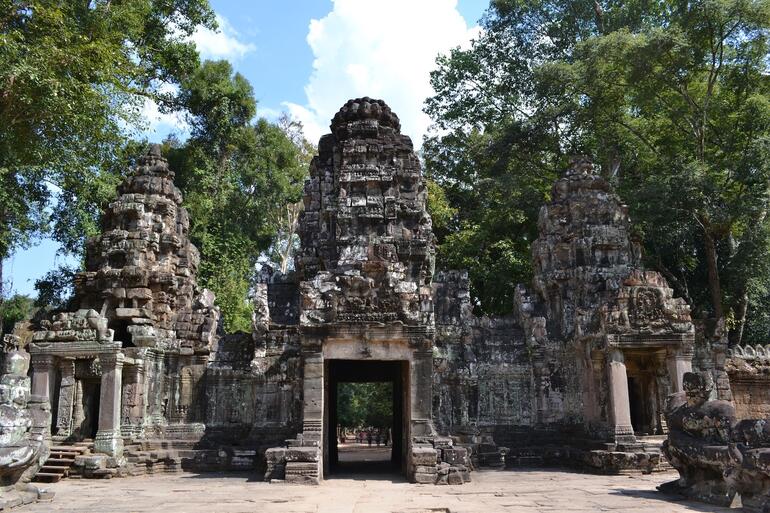
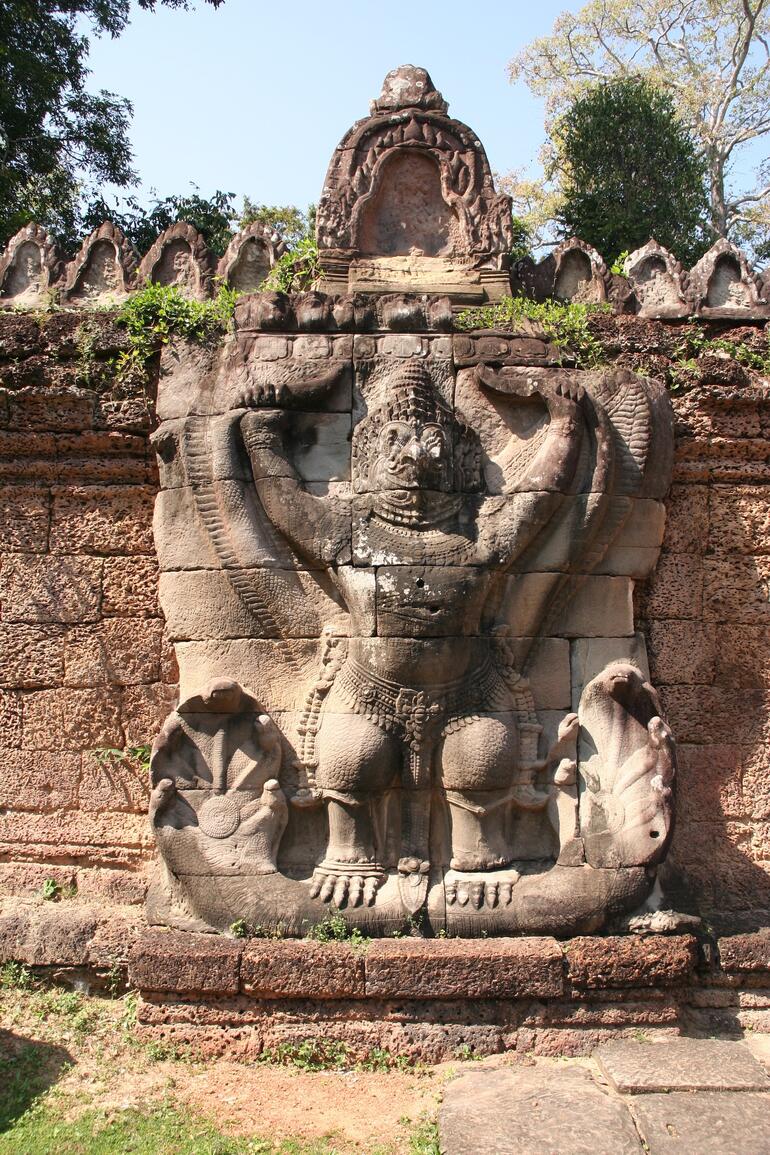
Preah Khan
One of the most important buildings ever erected during the Khmer Empire, the temple complex of Preah Khan was constructed on the orders of the great King Jayavarman VII to honor his father in 1191. Preah Khan is a rectangular temple that occupies 138 acres and is surrounded by a protective moat and fortified walls decorated with monumental stone garudas—bird-like creatures associated with the Hindu god Vishnu.
At Preah Khan, WMF created a visitor center and restored the garudas that surround the temple. In January of 2024, WMF transferred management of future preservation work at Preah Khan to the APSARA National Authority.
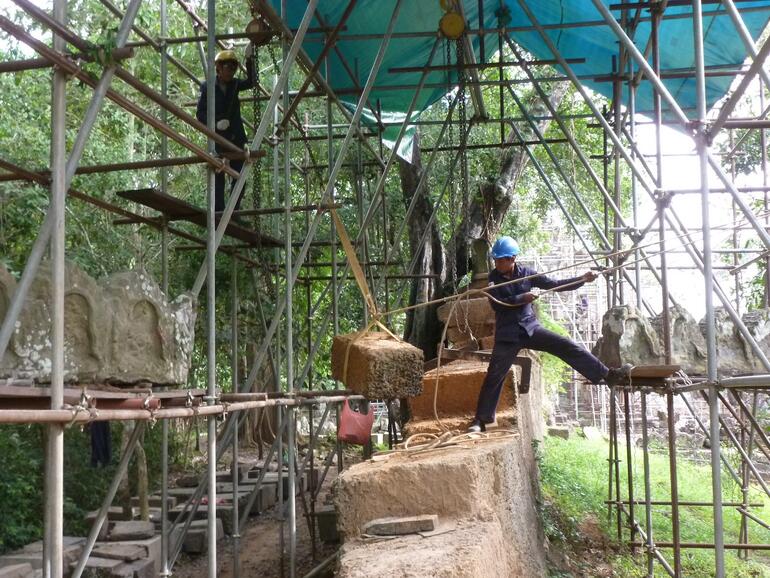
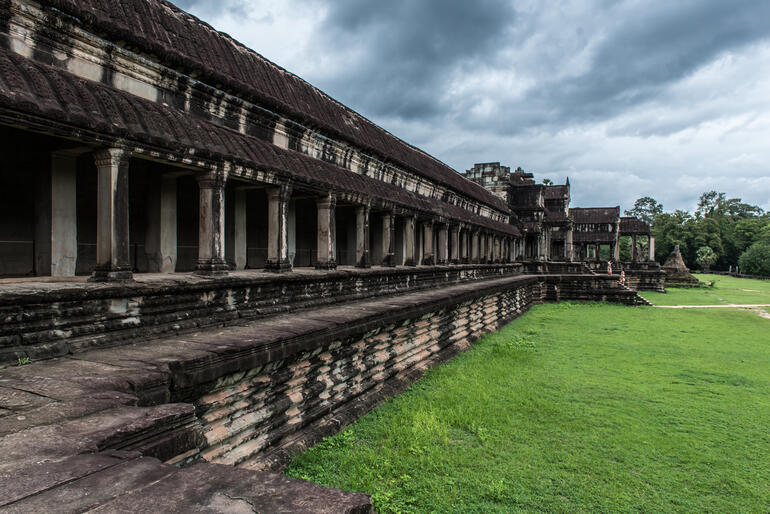
Angkor Wat
Angkor Wat was built by Suryavarman II in the early twelfth century as his state temple and eventual mausoleum. It is designed to represent Mount Meru, home of the devas, or Hindu gods. The temple is admired for the grandeur and harmony of its architecture, as well as for its extensive bas-reliefs.
WMF has worked on the conservation of the beautiful relief scultures in the Churning of the Ocean of Milk Gallery, located in the third enclosure of the temple complex.
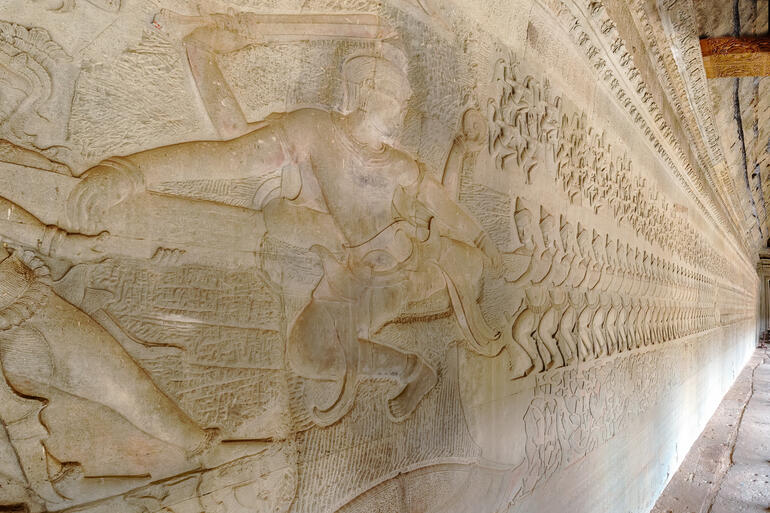
Churning of the Ocean of Milk Gallery
The Churning of the Ocean of Milk Gallery includes 76 yards (70 meters) of intricately sculpted bas-reliefs. The relief depicts the devas and asuras (demons) working to churn an ocean of milk to create amrita, the elixir of immortality.
With Vishnu at the center, the devas and asuras churn the ocean by tugging the giant five-headed Vasuki, king of the serpents, back and forth like a rope. The peak of Mount Mandara, shown at the center of the relief, acts as the churning rod. Mount Mandara in turn rests upon a giant turtle, which prevents it from sinking into the ocean. The churning produces both the elixir of immortality and apsaras, or heavenly beings.
Photo: Darrenp / Shutterstock.com
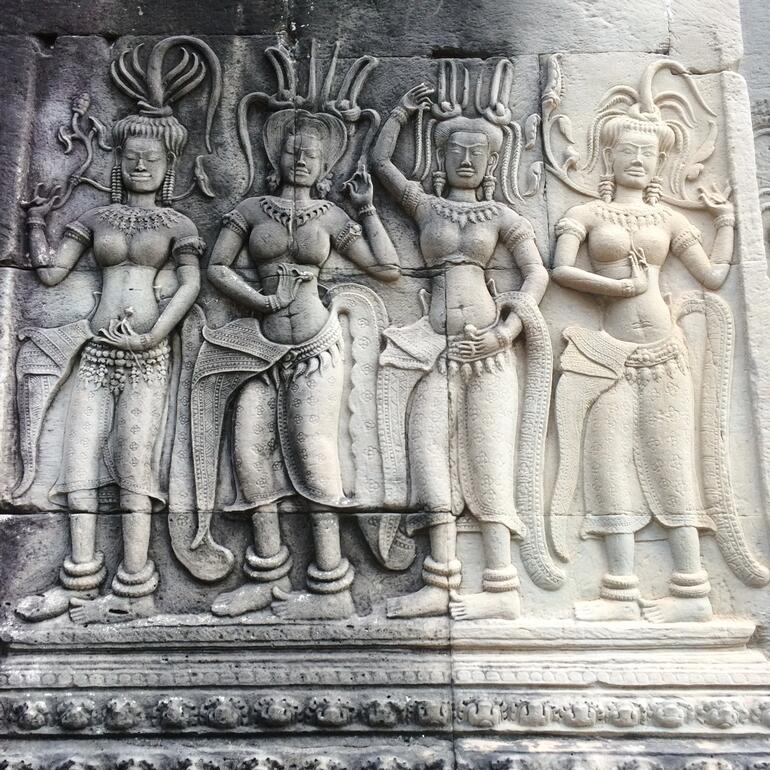
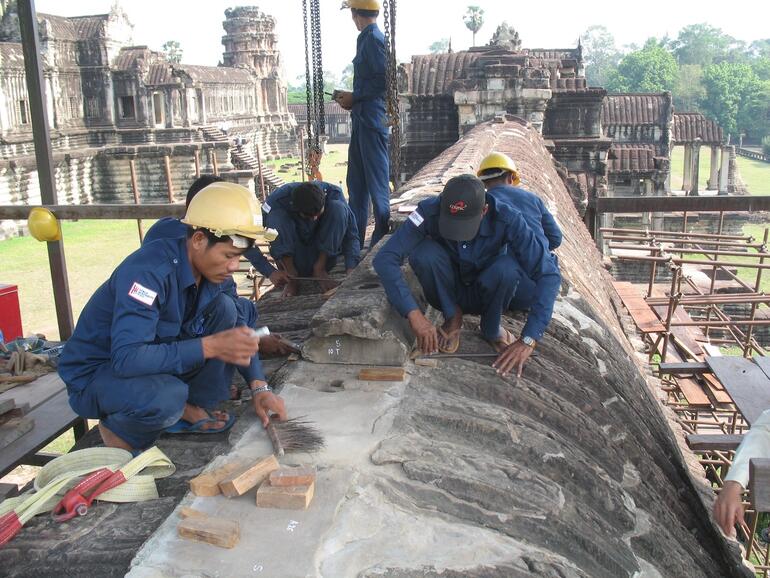
Conservation Work at Angkor Wat
The delicate bas-reliefs were endangered by water leakage from the roof of the gallery. Previous conservation efforts had used concrete, which had further compromised the traditional Khmer drainage system. Between 2008 and 2012, WMF and APSARA collaborated on the conservation of the roof, developing a sophisticated system for removing, repairing, and returning stones to the roof.
WMF’s team was also able to remove the damaging concrete and return the drainage system to its original function. Close collaboration between WMF, the APSARA National Authority, and the many professionals working together at the site demonstrate that preservation is a collective endeavor. In January of 2024, WMF transferred management of future preservation work at the Churning of the Ocean of Milk Gallery to the APSARA National Authority.
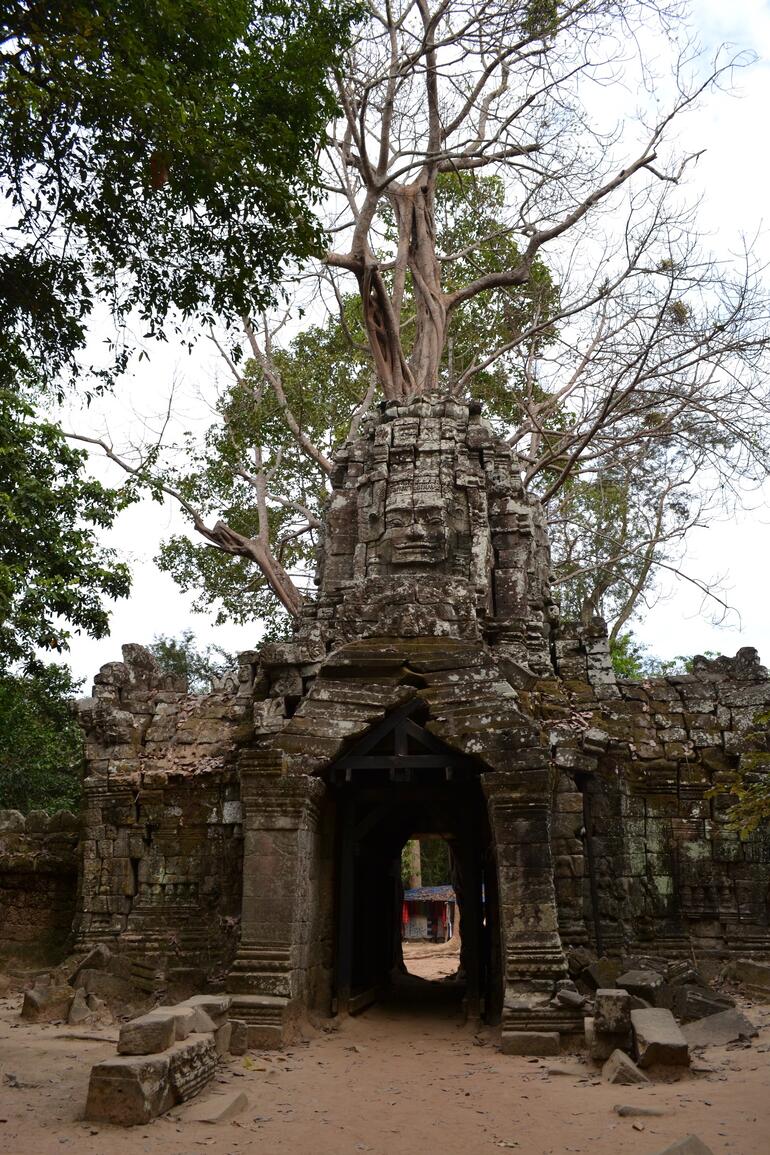
Ta Som Temple
The Khmer temple of Ta Som is located at the eastern end of the Northern Baray at Angkor and was built at the end of the twelfth century during the reign of the powerful Buddhist king Jayavarman VII. Little is known of the history and purpose of the temple, which is small compared with the many other temples built under Jayavarman’s reign. WMF began conservation work at Ta Som in 1998, focusing on training and site presentation.
Since WMF began work at the site, all four of the temple’s entrances—once blocked by debris—have been made accessible to the public. The temple’s four towers have also been stabilized. This improved access to the site’s finely carved stone sculptures and enhances enjoyment of the site. In January of 2024, WMF transferred management of future preservation work at Ta Som to the APSARA National Authority.
Each temple at Angkor has a different character, and Ta Som’s smaller scale and beautiful sculpture ensure that visitors are treated to a unique piece of Angkor’s history.
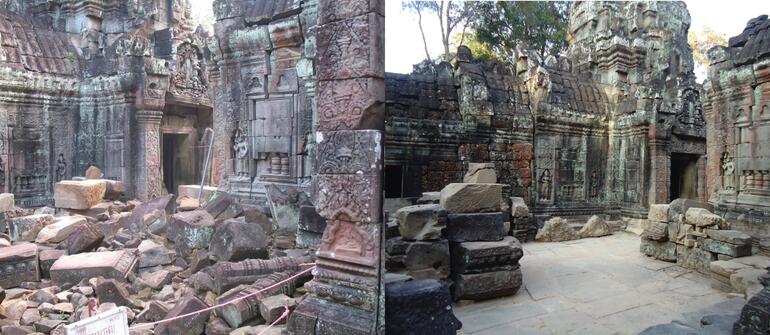
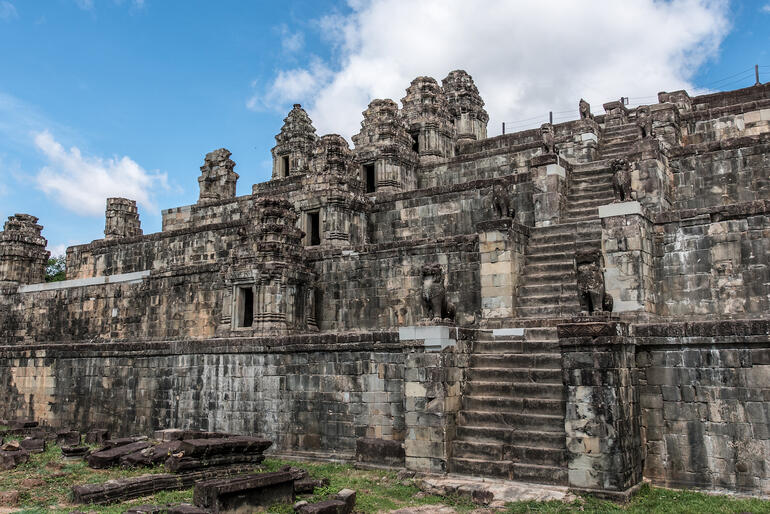
Phnom Bakheng
In addition to its architectural and historical significance as the first mountain-style temple built at Angkor, Phnom Bakheng is also popular today for its sunset views.
But the temple’s popularity has put this exceptional work of Khmer architecture in jeopardy. Though the rapid rise in tourism has brought welcome economic growth to Cambodia, wear from constant foot traffic threatens the complex’s stability.
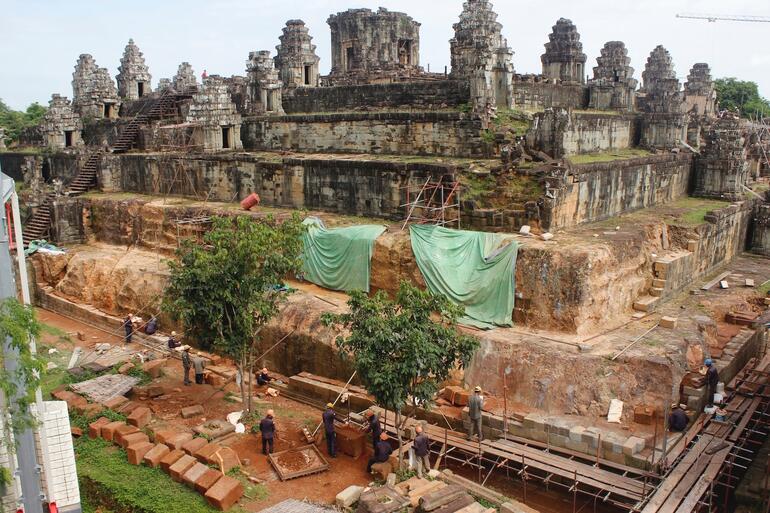
Phnom Bakheng
With enhanced visitor management, Phnom Bakheng can become a sustainable tourist destination that continues to be a cultural and economic asset to the community.
Over the past decade, conservation at Phnom Bakheng has focused on structural stabilization and waterproofing of the eastern elevation of the temple, as well as repairing foundations where needed.
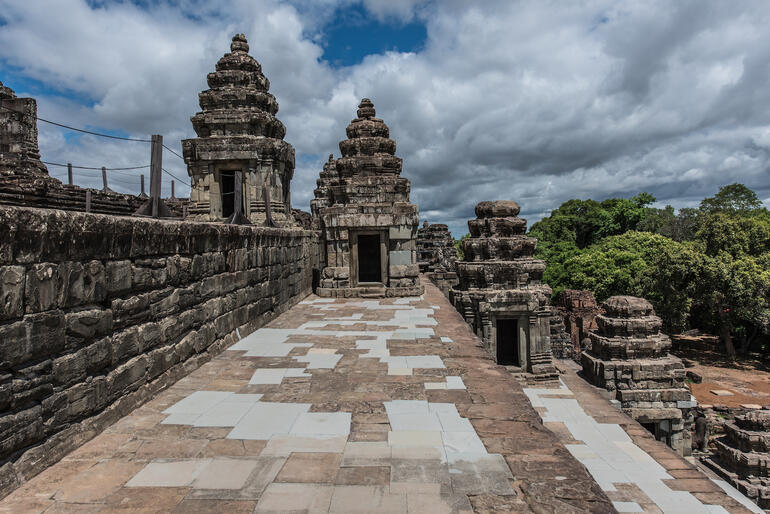
Conservation at Phnom Bakheng
The meticulous process of conserving Phnom Bakheng involved documentation of site conditions, removing terrace stones, pinning bedrock, waterproofing the foundation with PVC membrane, and cleaning the stone blocks before ultimately placing them back in their original position. New stones—either retrieved from the hillside of Phnom Bakheng or acquired from the site’s original quarry—were inserted in areas of loss when necessary. The eastern half was completed in 2019 after ten years of hard work.
In January of 2024, WMF announced a new phase of work at Phnom Bakheng, which will build on conservation efforts already underway on the western half of the complex and include a new certification program for experienced technicians.
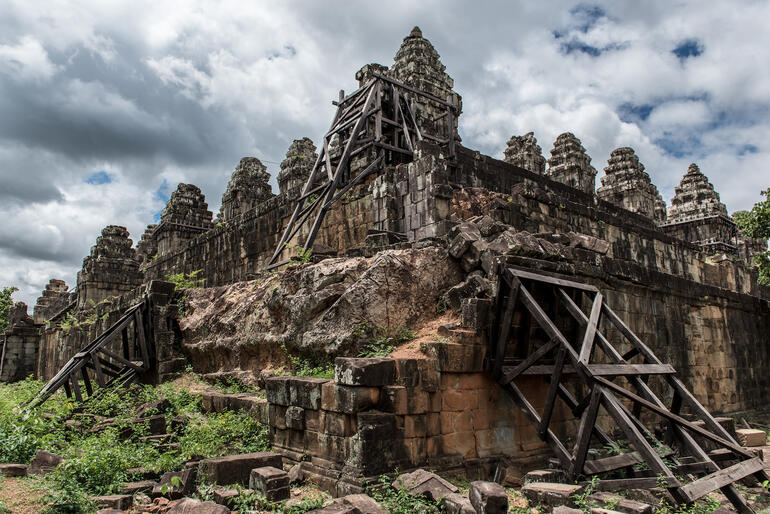
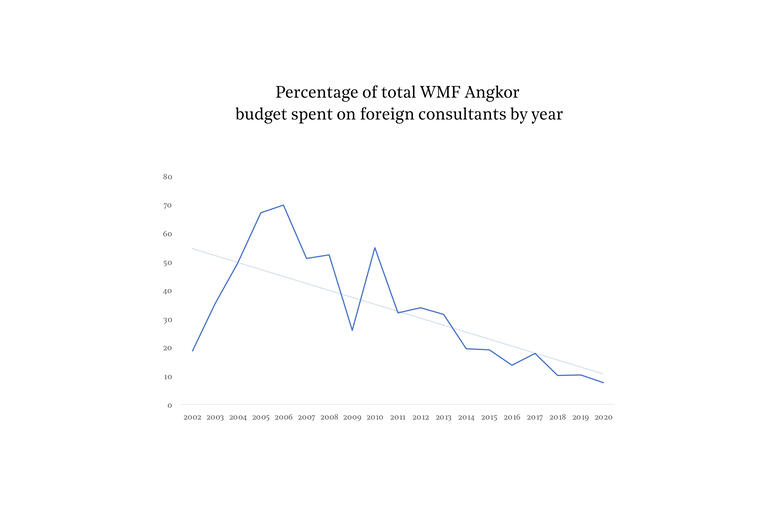
Impact
Since 1992, WMF has allocated roughly $19.5 million towards work Angkor. Of this, the vast majority (76 percent) was spent in Cambodia itself, heightening the local impact of our work. With the high proportion of resident employment, the total local economic impact of WMF’s activity is estimated to be in the region of $20-$25 million.
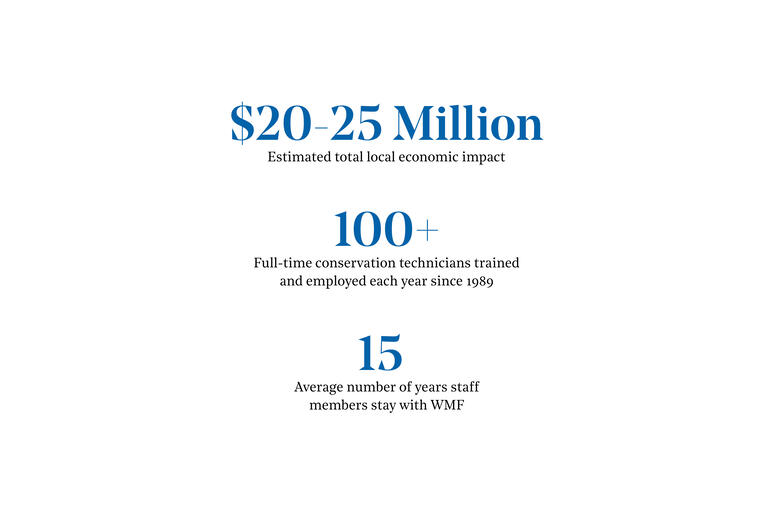
Impact
Over the past 35 years, well over 100 full-time conservation technicians have been trained and employed, with many mentoring younger apprentices. WMF is currently exploring options to further improve the socio-economic benefits of its capacity-building work and ensure that skills acquired as part of work are transferable to future employment opportunities.
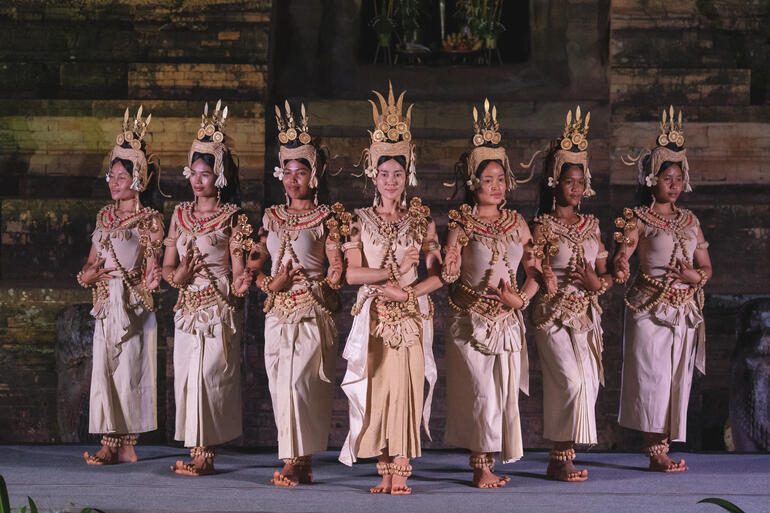
Support
Your donation directly supports all aspects of our work at Angkor Archaeological Park, including salaries for local workers, materials needed for conservation, and training initiatives.
Support the next stages of work at Angkor by clicking here.
Thank you
World Monuments Fund's work at Angkor Archaeological Park has been made possible, in part, by support from the U.S. Department of State; the U.S. Ambassadors Fund for Cultural Preservation (AFCP) and U.S. Embassy Phnom Penh; The Robert W. Wilson Charitable Trust; The Ralph E. Ogden Foundation; The Henry Luce Foundation, Inc.; The Brown Foundation, Inc. of Houston; American Express; The DM Foundation; The Estate of Margo Leavin; The Starr Foundation; International Music and Art Foundation; Mrs. Betty Wold Johnson and Mr. Douglas Bushnell; Wendy and Robert Brandow; Eleanor Briggs; Christopher and Priscilla Brewer; Samuel C . Miller and Rosetta A. Miller; The Pierre and Tana Matisse Foundation; Denise Gwyn Ferguson; Carnegie Corporation of New York; Isambard Kingdom Brunel Society of North America/Mr. and Mrs. Peter Norton; Donald I. Perry; Peter W. Davidson and Drew McGhee; Selma Ertegün; Tianaderrah Foundation / Nellie and Robert Gipson; Virginia James; The Andy Warhol Foundation for Visual Arts; The Estate of John Dennis; Pamela and David B. Ford; Gillian Fuller; Nora McNeely Hurley and Manitou Fund; Samuel H. Kress Foundation; Peter Spry-Leverton; and anonymous donors.
World Monuments Fund's work at Ta Som Temple has been made possible, in part, by Christopher and Priscilla Brewer and Tianaderrah Foundation / Nellie and Robert Gipson.
World Monuments Fund's work at Preah Khan Temple has been made possible, in part, by The Ralph E. Ogden Foundation; Wendy and Robert Brandow; Carnegie Corporation of New York; Mrs. Betty Wold Johnson and Mr. Douglas Bushnell; The Estate of John Dennis; Pamela and David B. Ford; Gillian Fuller; and Peter Spry-Leverton.
World Monuments Fund's work at the Churning of the Ocean of Milk Gallery has been made possible, in part, by The Robert W. Wilson Charitable Trust; International Music and Art Foundation; The Ralph E. Ogden Foundation; and The Pierre and Tana Matisse Foundation.
World Monuments Fund’s work at Phnom Bakheng has been made possible, in part, by the U.S Department of State, the U.S. Ambassadors Fund for Cultural Preservation (AFCP), the U.S. Embassy Phnom Penh, the Ralph E. Ogden Foundation, The Robert W. Wilson Charitable Trust, the Estate of Margo Leavin, Denise Gwyn Ferguson, Nora McNeely Hurley and Manitou Fund, and anonymous donors.
